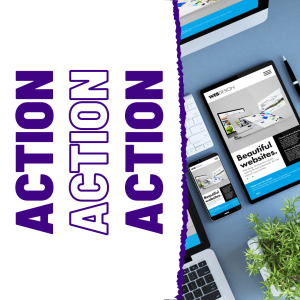As a small or solo business owner, your website is your digital storefront. It’s where customers learn about your business, explore your offers, and (hopefully) take action. But here’s the hard truth:
A great website doesn’t matter if no one visits it.
Yes, your website could be the issue—slow load times, confusing navigation, or lack of clear calls-to-action can hurt conversions. But most often, the bigger problem is this: you’re not driving enough traffic to your site.
In this post, we’ll focus on actionable strategies to bring consistent, targeted visitors to your website. Whether you’re starting from scratch or looking to amplify your efforts, these tactics will help you grow your audience and turn traffic into results.
Step 1: Use Social Media to Direct Your Audience
Social media isn’t just for building connections; it’s also a powerful tool for driving traffic.
Here’s how to leverage it effectively:
- Share valuable content: Instead of just promoting your products, provide blog posts, how-to guides, or free resources that link back to your website.
- Use strong calls-to-action (CTAs): Encourage your audience to visit your site for more details, exclusive offers, or downloadable resources.
- Be consistent: Post regularly and keep your audience engaged with updates that always lead back to your website.
Pro Tip: Instagram Stories, LinkedIn posts, and Pinterest pins are excellent tools for driving traffic when paired with a clear link.
Step 2: Optimise Your Website for SEO
Search Engine Optimisation (SEO) might sound intimidating, but it’s one of the most effective ways to drive long-term traffic.
Start with these simple steps:
- Target the right keywords: Use tools like Google Keyword Planner or Ubersuggest to find words your audience searches for.
- Optimise your website pages: Focus on titles, meta descriptions, and headings. For example, if you’re a florist, include phrases like “wedding flower arrangements” in your content.
- Answer customer questions: Add a blog to your website that answers common questions your customers ask. Not only does this help your SEO, but it also establishes you as an expert in your field.
Pro Tip: SEO is a marathon, not a sprint. Consistency and quality content are key to climbing search engine rankings.

Step 3: Collaborate with Others to Expand Your Reach
Collaboration is an underrated traffic-driving strategy.
Here’s how to make it work for you:
- Partner with complementary businesses: For example, if you’re a graphic designer, team up with a web developer to cross-promote services.
- Guest post on blogs: Writing for other websites exposes your business to a new audience and links back to your site.
- Work with influencers: Influencers in your niche can help introduce your website to their followers, driving traffic and increasing credibility.
Ensure your collaborations are authentic and mutually beneficial to get the best results.
Step 4: Use Email Marketing to Bring Visitors Back
Email marketing is one of the highest-converting traffic sources because it targets people who are already interested in your business.
Get started with these steps:
- Build your email list: Offer a free resource, like an eBook or discount, in exchange for email sign-ups.
- Send valuable updates: Share blog posts, product launches, or exclusive discounts with your subscribers.
- Include clear CTAs: Every email should guide readers to your website with links to specific pages or offers.
Segment your email list so you can send tailored content that meets the needs of different audience groups.

Why Traffic Quality Matters More Than Quantity
It’s not just about how many visitors you get—it’s about who they are.
Driving targeted traffic ensures that the people visiting your site are genuinely interested in what you offer. This leads to:
- Higher conversion rates.
- Better customer relationships.
- Long-term business growth.
Focus on attracting visitors who align with your ideal customer profile, and you’ll see better results over time.

Take Action!
Driving traffic to your website isn’t about doing everything—it’s about doing the right things consistently.
Start picking one or two strategies from this post and commit to them for the next month. Whether it’s creating a content plan for social media, optimising your site for SEO, or collaborating with a partner, small steps will lead to big results.
Remember your website isn’t just a digital placeholder; it’s a tool for building connections, trust, and sales. The more intentional you are about driving traffic, the more impact it will have on your business.

Pingback: Your Marketing is Working. That’s the Problem. - rawmarrowblog
Comments are closed.